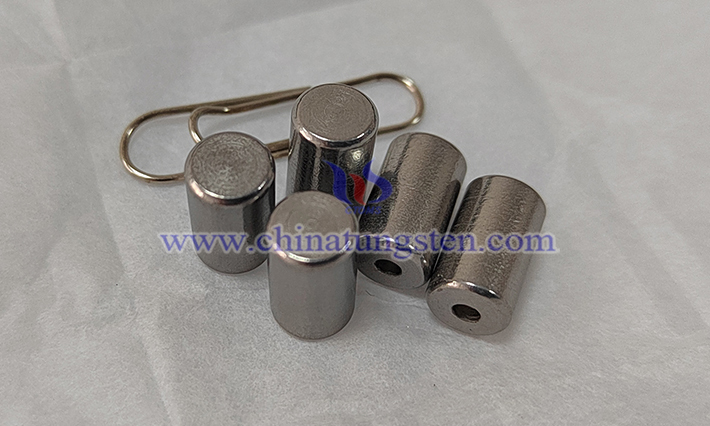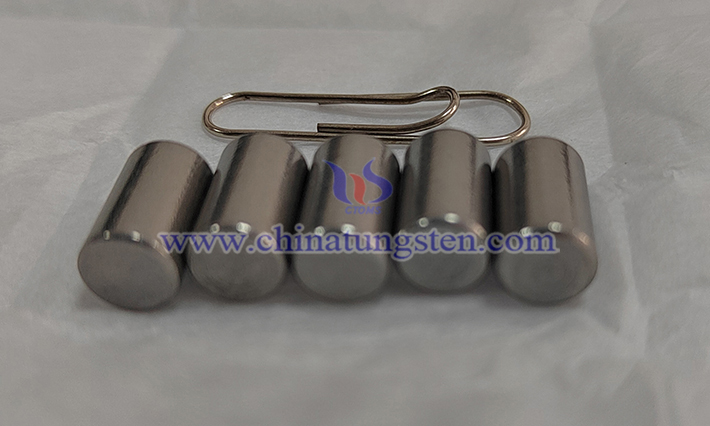Factors Affecting the Emission Efficiency of Barium Tungsten Electrodes
- Details
- Category: Tungsten Information
- Published on Tuesday, 27 May 2025 17:46
The emission efficiency of barium tungsten electrodes is the result of the coupling of multiple influencing factors, mainly involving material properties, preparation process, working conditions and environment, etc.
1. Material Composition and Structure
Tungsten Matrix Characteristics: The porosity and pore size distribution of the porous tungsten matrix affect the storage and diffusion of barium. Higher porosity can store more active substances, but the structural strength needs to be balanced.
Impregnation Composition: For example, the ratio of BaO-Al₂O₃-CaO affects the release characteristics of barium. The appropriate ratio can optimize the decomposition temperature and ensure a continuous supply of barium.
Doping Elements: Adding rare earth elements or transition metals may improve the electron emission performance or enhance the stability of the matrix.

2. Preparation Process
Sintering Parameters: Sintering temperature and time affect the matrix density and pore structure. Too high a temperature may cause barium to volatilize prematurely, while too low a temperature may cause a loose structure.
Impregnation Process: The impregnation method (such as solution impregnation, melt impregnation) determines the uniformity and adhesion of the active material distribution.
Activation Treatment: The barium is released by heating activation. The temperature, time and vacuum degree need to be precisely controlled to form a uniform low work function surface layer.
3. Surface State
Barium Coating: The thickness and uniformity of the surface barium coating directly determine the work function. Too thin leads to insufficient emission, and too thick may cause too fast evaporation.
Pollution and Poisoning: O₂, H₂O and other impurity gases in the environment react with barium to form oxides, which increase the work function and require high vacuum or inert atmosphere protection.

4. Working Environment
Temperature: There is an optimal working temperature range. Too low temperature limits the diffusion of barium, and too high temperature accelerates the evaporation of barium.
Current Density: High current load accelerates barium consumption and material fatigue, and performance and life need to be balanced.
Electric Field Effect: The external electric field reduces the effective work function through the Schottky effect, but it is an external optimization factor.
Vacuum Degree: High vacuum reduces the risk of gas molecule collision and poisoning, and maintains a low work function surface.
Working Atmosphere: Inert gas protection can delay oxidation, but ionization interference must be avoided.
5. Microstructure
Grain Size: Small grains enhance mechanical strength, but may affect the diffusion path; coarse grains may reduce the storage of active substances.
Surface Morphology: Nanostructures or rough surfaces can increase the effective emission area and improve the overall current.
6. Life and Degradation Mechanism
Barium Depletion: After long-term use, the barium reserves decrease, and the impregnation amount and diffusion design need to be optimized.
Structural Fatigue: Thermal cycling or ion bombardment causes matrix damage, affecting the barium diffusion path.
- Chinatungsten Online: www.tungsten.com.cn
- CTIA GROUP LTD: en.ctia.group
- Tungsten News & Price: www.ctia.com.cn
- Molybdenum News & Price: news.molybdenum.com.cn
- Tel.: 86 592 5129696; Email: sales@chinatungsten.com



 sales@chinatungsten.com
sales@chinatungsten.com